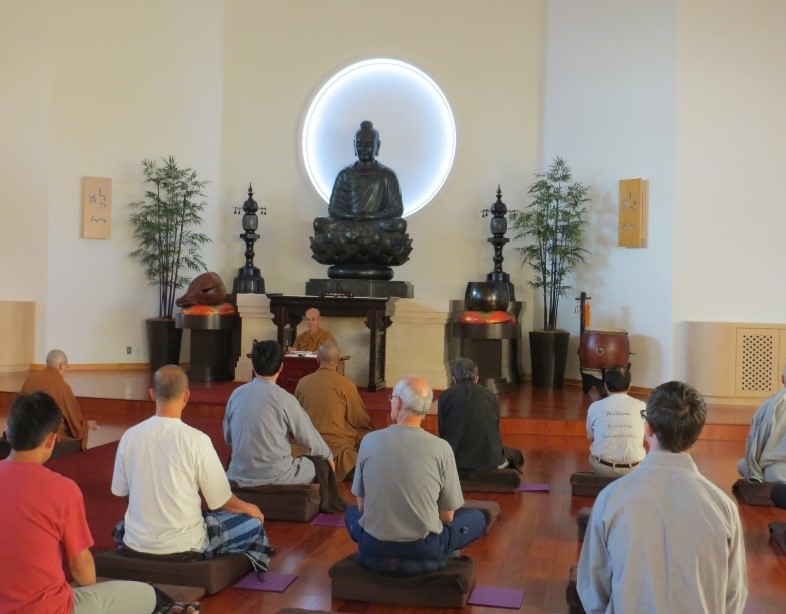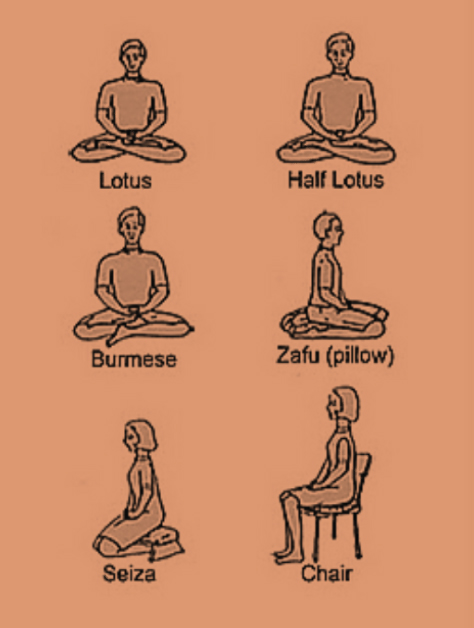Meditate with the English Dharma Group

Every Sunday morning, the English Dharma Group invites you to a free thirty minute guided meditation session from 10:00 am to 10:30 am in Kwan Yin Hall. This is part of our Sunday Teachings and is suitable for everyone. The meditation is led by senior members of the English Dharma Group and monastics. Directly following this will be a Dharma talk (see calendar for more information).
Benefits of Meditation
Meditation practices have been taught for centuries and in recent years, the use of meditation has increased greatly due to its scientific proof in dealing with challenges of modern life. Various effects are often contributed to daily meditation practices such as stress reduction, improvement of health, enhanced performance, personal insight, and increased focus. For 7 Fascinating Facts about meditation, follow the slide show provided by the Huffington Post in a news article on 8 Ways Meditation Can Improve Your Life from September 19, 2014.
Buddhist Meditation is the means of transforming the mind with the ultimate goal of reaching enlightenment, which is the realization of the true nature of the mind. By drawing deep into our consciousness and directing the mind, we can discover reality. By cultivating the practice, we develop positive approaches to our life. We will no longer be periodically happy. We will achieve true happiness.

People often ask what tools they need to meditate. The answer is very simple; all we need is our breath, and as this comes naturally, we all are capable of meditating. Practicing meditation means to discover a world in which we can help remove the negativity and replace it with positive thoughts and actions.
Through meditation, we can achieve physical, mental, and emotional changes and those lead directly to the development of inner strength, for the benefit of all.
Basic Meditation Instruction
Free meditation instruction is available to everyone. A senior Dharma Group member will provide all newcomers with basic information, including how to deal with various obstacles during a 15-minute break following the meditation session. We enjoy our social gatherings over lunch during which you are welcome to address all questions you might have about daily practice and possible challenges.
Visit our Free Downloads and Suggested Reading pages under the Resources tab above for more information on meditation practices.
 1. Sitting
1. Sitting
- You may sit on the floor or on the benches, whichever is more comfortable for you.
- On the bench: Sit with a straight back. Keep your knees apart about the width of your shoulders, feet firmly placed on the floor.
- On the floor: Arrange your legs in a position you can maintain comfortably – either in the full-lotus or half-lotus position, or with your legs simply tucked close to your body. The key is to make sure that your weight is distributed on three points: both of your knees on the ground and your buttocks on the round cushion.
2. Your Back
- Straighten and extend your spine, keeping it naturally upright, centering your balance in the lower abdomen.
- Push your lower back slightly forward, open your chest, and tuck your chin in slightly keeping your head upright (not leaning forward, backward or to either side).
- Sway your body gently from left to right until you naturally come to a point of stillness on your cushion.
3. Your Eyes
Keep your eyes on the floor, about 2 to 4 feet in front of your body. Your eyes can be half or fully closed.
4. Your Hands
Place both hands in your lap, palms up. Rest your left hand on your right hand, thumb tips just touching and forming a horizontal oval. Pace the sides of the little finger against your abdomen, a few inches below the navel.
5. Relax
- Gather your attention and move it slowly down through your body, starting at your head, making sure that you are calm and relaxed as you go. If you notice areas of physical tension, try to let them go as you exhale.
- Allow your thoughts, ideas, and memories to drift in and out of your mind without following them.
6. Breath
- Take a few deep breaths, exhaling slowly. Let your breath settle into its natural rhythm. Sit still and keep your attention on your breath. When your attention wanders, bring it back to your breath again and again – as many times as necessary.
- Focus your mind on the sensation of the breath, or on the movement of the abdomen. Simply pay attention to this process and observe your mind.
7. Pay Attention
- Be in the moment.
- As soon as you notice that your mind has wandered, return your attention to the breath or the abdomen.
- You may wish to repeat the phrase “in and out” as you inhale and exhale, or “rising and falling” as the breath comes in and out. This can help focus the attention more effectively. Those new to meditation might start to silently count each breath, beginning with one and count up to ten. Each count includes an entire cycle of inhalation and exhalation. When you reach 10, you start all over for as long as this method helps to calm your mind from wandering. If you get distracted, start over again at ‘one’. The number ten is arbitrary; it can be any number below or above ten.
8. Daily Practice
- Practice every day for 5 to 15 minutes. As you progress, slowly extend the length of time you meditate. Then discover the treasures in your life.
Benefits of Buddhist Meditation
Listen to Venerable Hung-I’s recorded Dharma talk on the benefits of Buddhist Meditation – February 15, 2015.
Come and visit us.
